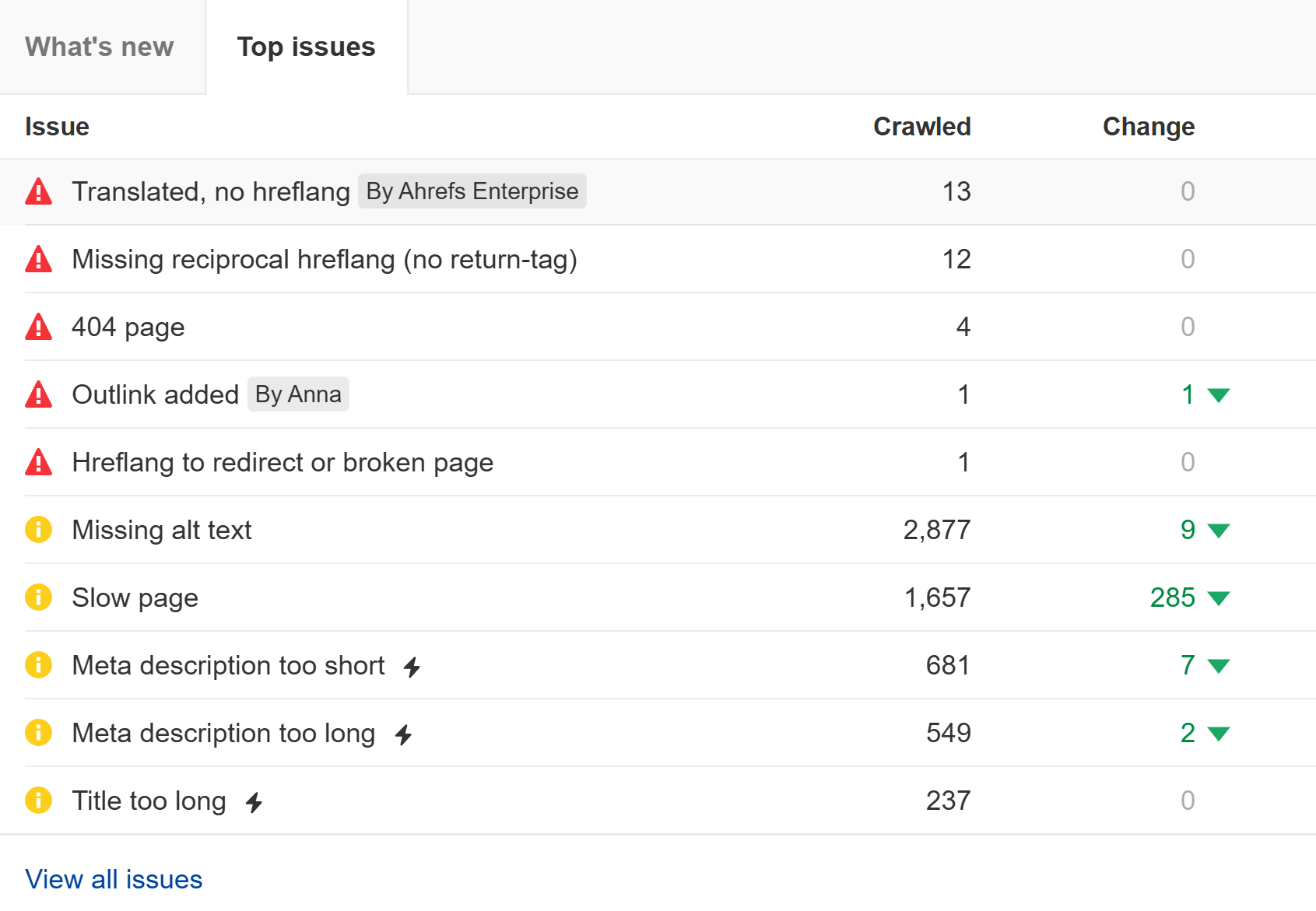
If you’re a founder who knows that SEO matters, but doesn’t know where to start, check out this one-page primer.
Thanks to the following founders for sharing feedback on this guide:
Sidenote.
I’m writing this based on my experience helping startups from pre-seed to post-IPO with their search strategy. I also taught some of these ideas as part of the a16z Marketing Counsel Series.
Longer-term, most companies with serious SEO traffic acquire it in one of four ways:
1. Editorial content: long-term, educational blogging
Editorial content refers to the process of publishing high-quality, educational resources targeted at relevant keywords. By systematizing content creation and publishing SEO content every week, many companies generate hundreds of thousands of monthly visits from blogging alone.
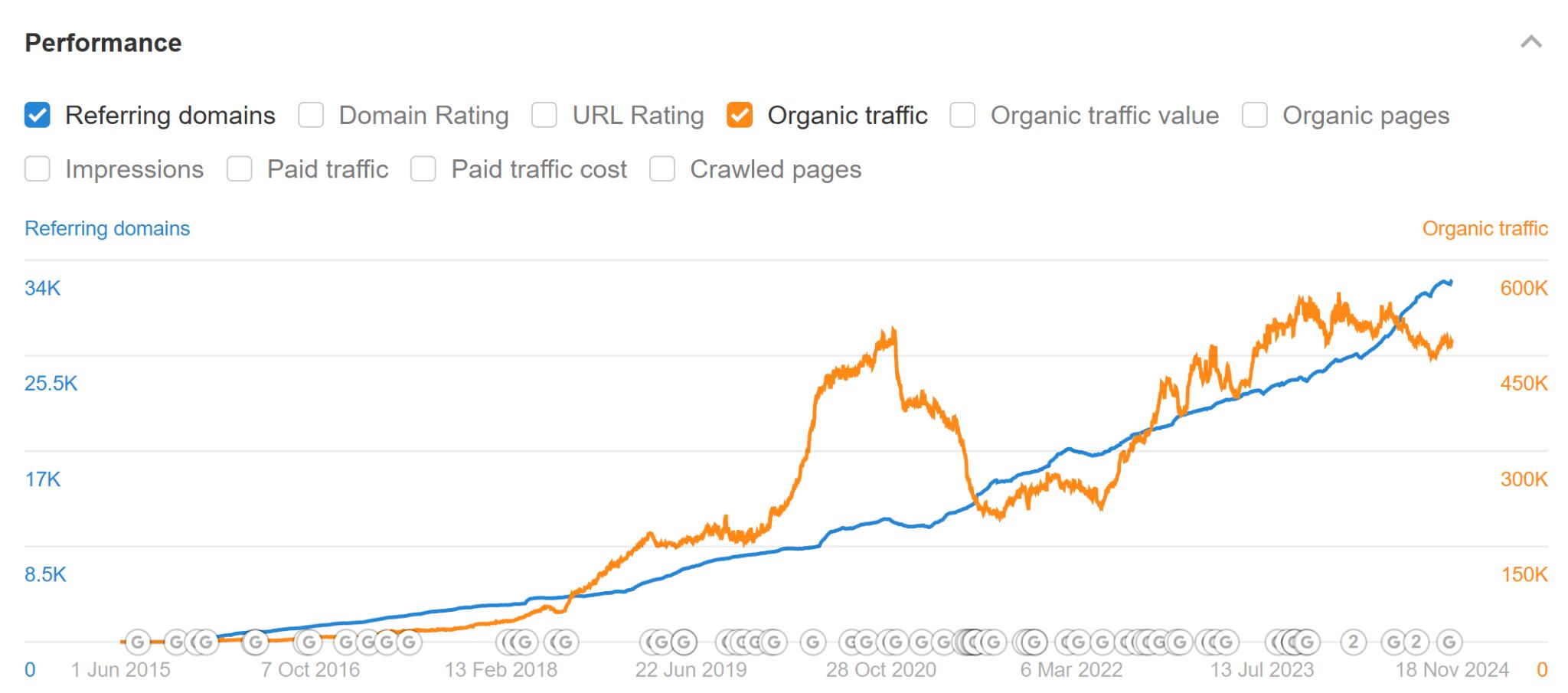
Editorial content is great for building brand awareness and educating visitors, but—even in the era of ChatGPT—it’s an expensive strategy.
Blogging is also very competitive today. Most high-volume keywords are already contested by big, well-known brands (with even bigger budgets). There are plenty of opportunities to become one of these brands, but it’s harder than ever before.
Check out these examples of editorial content:
2. Programmatic content: semi-automated landing page creation
Programmatic content describes the creation of keyword-targeted pages in an automatic (or near automatic) way.
It provides a way for companies to create thousands of website pages targeted at thousands of keywords—without having to design, write, and publish pages manually. Programmatic pages are usually created from data like product prices, weather, or location information. Companies like Zapier, Zillow, and G2 use programmatic SEO to generate millions of pageviews each year.
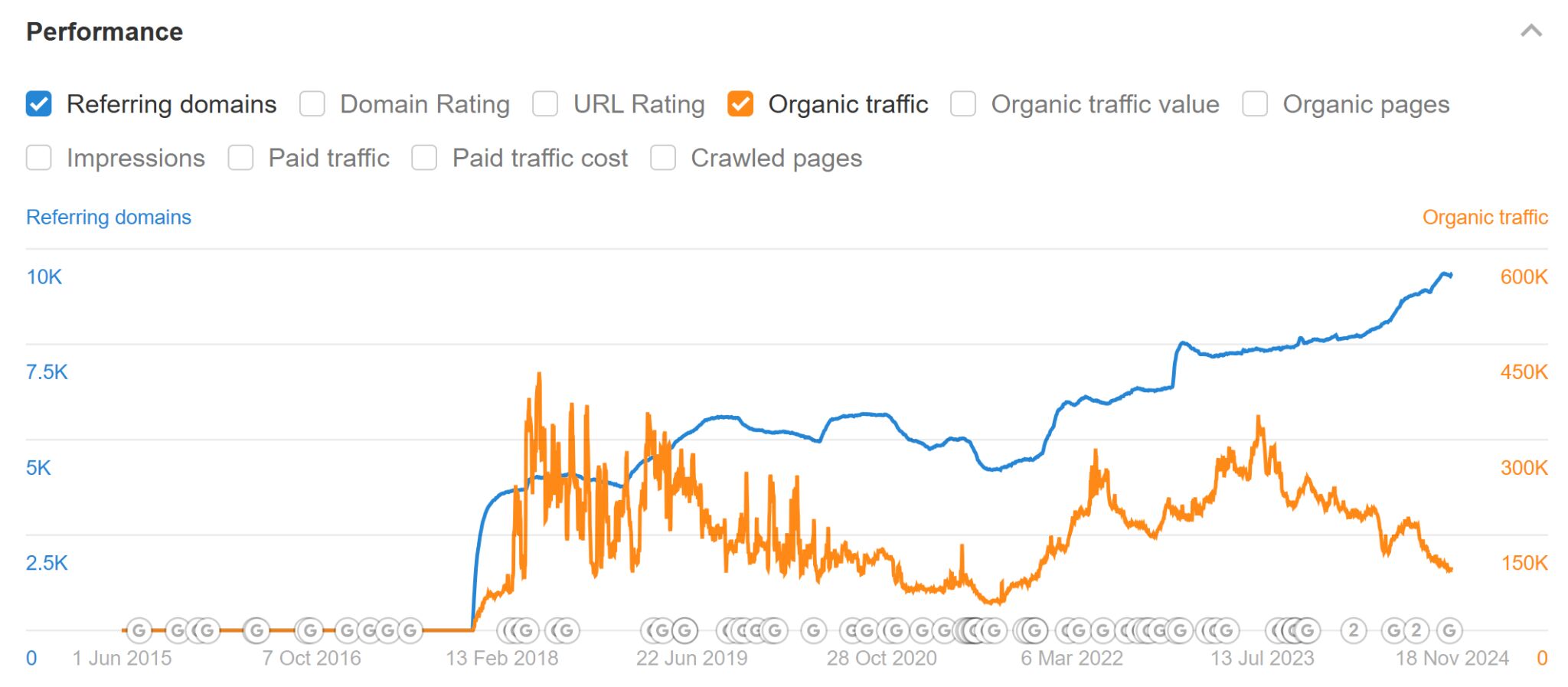
This strategy often appeals to technical founders, but it’s not without risk. Programmatic content that is deemed thin or spammy will struggle to rank, or may even be dropped from search. For this reason, it’s a great counterpart to a “safer” SEO strategy, like editorial content or free tools. Put another way: only consider programmatic SEO if you can afford to lose all of the traffic it creates.
Check out these examples of programmatic content:
Further reading
3. UGC: curating content created by your users
User-generated content is the process of curating and search-optimizing content created by your users: like product templates, portfolios, or even articles.
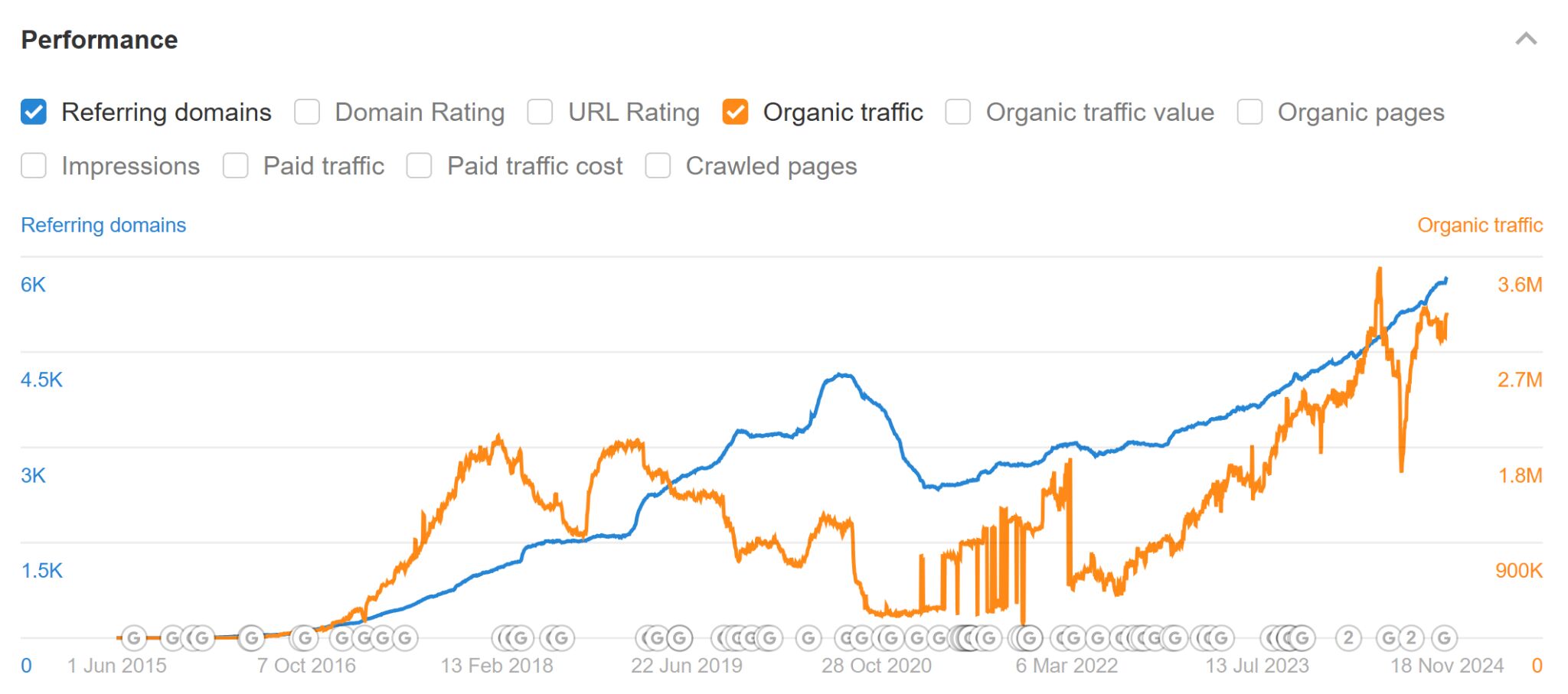
UGC allows you to outsource the effort of content creation, allowing you to generate potentially millions of pages of content with relatively little cost. But UGC also runs the risk of abuse (like your content being highjacked by spammers—see this example from Contently) and high moderation costs.
Check out these examples:
4. Free tools: free versions of your product functionality
Free tools involve offering a simplified version of your product, or tools tailored to solving specific problems.

There are many high-traffic keywords that can only be targeted using free tools. Here’s the search results page for “free backlink checker”. The first 19 results are all free tools, without an article in sight:
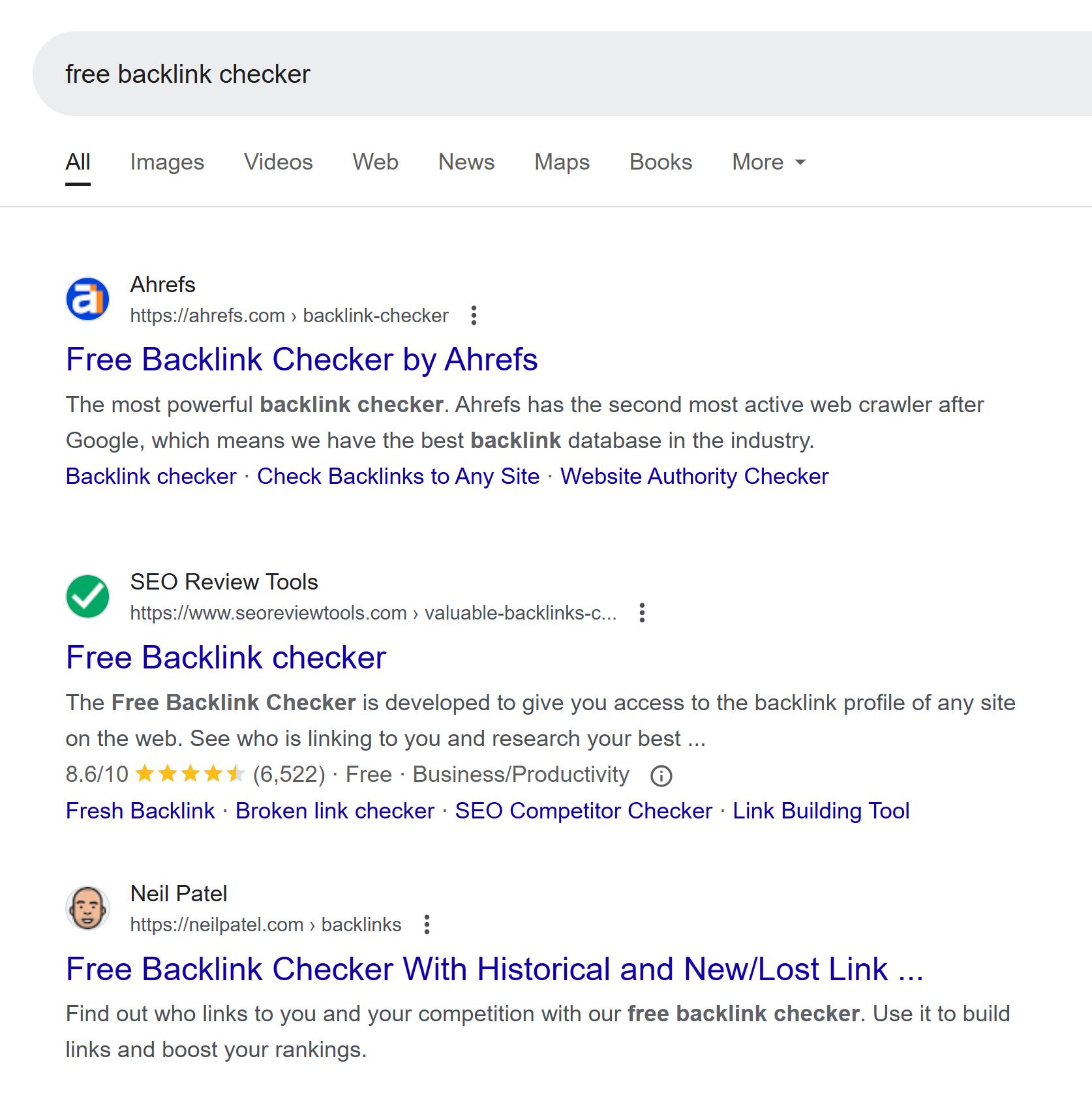
Free tools can provide a good opportunity to naturally introduce your paid product to free users. The added complexity of creating these tools also means that this strategy is harder for your competitors to immediately copy.
As an obvious downside, these tools take development resources to build and can generate sizeable operating costs.
See these examples of free tool strategies:
Is SEO dying?
SEO isn’t dying, but it is changing. ChatGPT Search, Perplexity, and other LLMs offer an alternate way for users to access information online. AI Overviews have the potential to reduce the number of people visiting websites from search results. AI-generated content is increasing the competition in many search results.
The best practices of SEO remain the same, but it’s worth exploring topics like LLM optimization and learning about AI Overviews.
How should I make content?
There are four main ways to create, each with pros and cons:
- In-house: Creating content yourself offers the greatest control over quality, but necessitates a ton of time and knowledge to create.
- Freelancers: Relatively affordable but require lots of sourcing writers, management, quality control, and editing.
- Agencies: Offer a done-for-you service that often benefits from experience working across dozens of similar companies, but can be very expensive.
- AI content generation: Extremely cheap to create but still requires marketing and SEO expertise to get good results. Publishing bad AI content can have a negative impact on your SEO.
Should we hire an SEO agency?
A great SEO agency can have a huge positive impact on your growth. The hard part is finding the great ones. I’ve had positive experiences with the following agencies: Organic Growth Marketing, Growth Plays, Graphite, Siege Media,and Animalz (I used to work at Animalz).
How do I know it’s working?
At an early stage, it’s hard to set concrete goals and KPIs. Instead, just aim for month-over-month improvement in a handful of core metrics, like organic website traffic, keyword rankings, and backlinks.
Leading indicators can be helpful: it’s a good sign if recently published pages begin to rank in low positions for dozens of similar keywords.
To track organic traffic, set up Google Search Console. For keyword rankings and backlinks, use Ahrefs. You can also use a web analytics tool like GA4 or Ahrefs Website Analytics (coming soon) to track website traffic from non-search sources.
How often should I publish?
As a general rule, the more often you publish, the better, because of SEO’s ability to compound over time. There is one exception: publishing hundreds (or thousands) of articles in a short period of time might signal to Google that your website is likely creating AI content.
Does AI content work?
Generative AI can be helpful for speeding up parts of the SEO workflow, like braintorming titles, creating metadata, or helping to write. But as a general rule, “pure” AI content doesn’t perform very well (and many of Google’s recent algorithm updates are designed to reduce the visibility of low-value AI content).
For more context, read our article about AI content strategies: AI Content Is Short-Term Arbitrage, Not Long-Term Strategy
Does black hat SEO work?
Black hat SEO is the process of taking advantage of temporary loopholes in Google’s ranking systems.
The key word is temporary. Black hat SEO has a short shelf-life, and can often end in websites being completely demoted or deindexed from Google’s search results. If you’re building a company for the long-term, it’s probably not worth the risk.
Final thoughts
I recommend these guides to SEO and content marketing written by startup founders and investors:
Further reading
Content Copyrights Belong to The Author. All Rights Reserved.
We're A Dallas Digital Marketing Agency That is Experts At Social Media Marketing, Website Design and Emarketing and Promotion.



